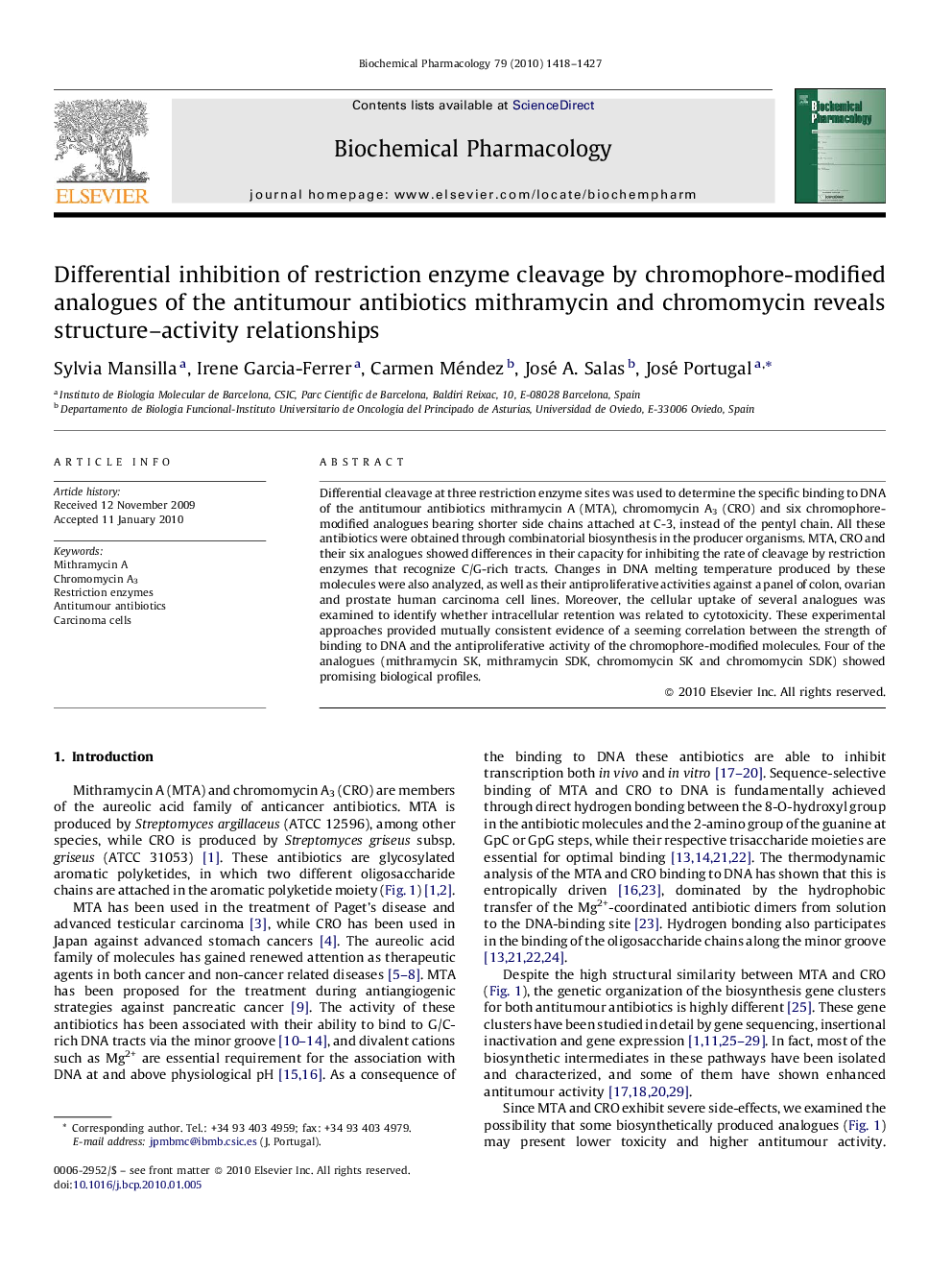| Article ID | Journal | Published Year | Pages | File Type |
|---|---|---|---|---|
| 2513647 | Biochemical Pharmacology | 2010 | 10 Pages |
Differential cleavage at three restriction enzyme sites was used to determine the specific binding to DNA of the antitumour antibiotics mithramycin A (MTA), chromomycin A3 (CRO) and six chromophore-modified analogues bearing shorter side chains attached at C-3, instead of the pentyl chain. All these antibiotics were obtained through combinatorial biosynthesis in the producer organisms. MTA, CRO and their six analogues showed differences in their capacity for inhibiting the rate of cleavage by restriction enzymes that recognize C/G-rich tracts. Changes in DNA melting temperature produced by these molecules were also analyzed, as well as their antiproliferative activities against a panel of colon, ovarian and prostate human carcinoma cell lines. Moreover, the cellular uptake of several analogues was examined to identify whether intracellular retention was related to cytotoxicity. These experimental approaches provided mutually consistent evidence of a seeming correlation between the strength of binding to DNA and the antiproliferative activity of the chromophore-modified molecules. Four of the analogues (mithramycin SK, mithramycin SDK, chromomycin SK and chromomycin SDK) showed promising biological profiles.
Graphical abstractFigure optionsDownload full-size imageDownload as PowerPoint slide
